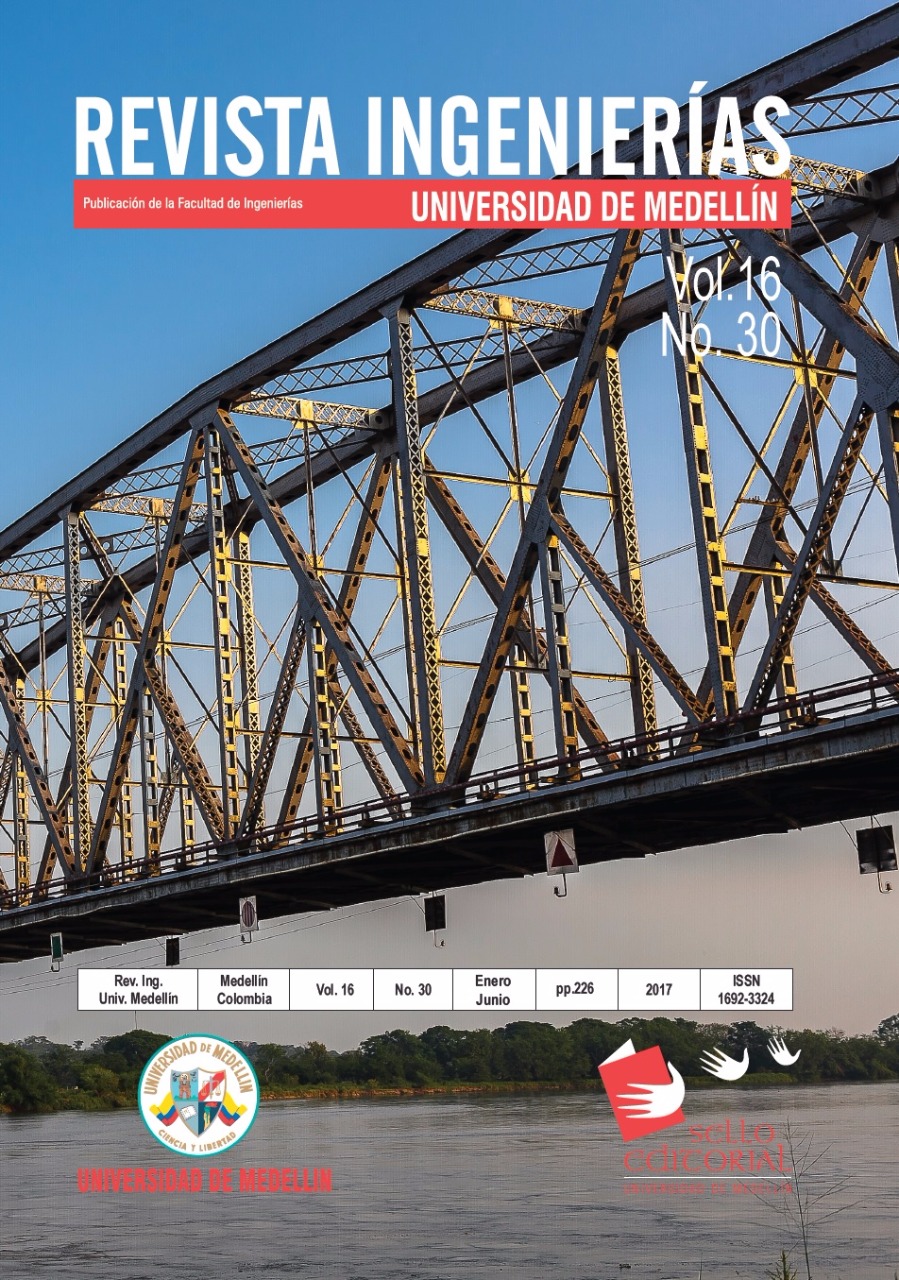- Articles
- Enviado: junio 28, 2016
-
Publicado: mayo 10, 2017
Resumen
Las cirugías mínimamente invasivas se han vuelto populares debido a que implican menos riesgos con respecto a las intervenciones tradicionales. En neurocirugía, las tendencias recientes sugieren el uso conjunto de la endoscopia y el ultrasonido, técnica llamada endoneurosonografía (ENS), para la virtualización 3D de las estructuras del cerebro en tiempo real. La información ENS se puede utilizar para generar modelos 3D de los tumores del cerebro durante la cirugía. En este trabajo, presentamos una metodología para el modelado 3D de tumores cerebrales con ENS y redes neuronales. Específicamente, se estudió el uso de mapas auto-organizados (SOM) y de redes neuronales tipo gas (NGN). En comparación con otras técnicas, el modelado 3D usando redes neuronales ofrece ventajas debido a que la morfología del tumor se codifica directamente sobre los pesos sinápticos de la red, no requiere ningún conocimiento a priori y la representación puede ser desarrollada en dos etapas: entrenamiento fuera de línea y adaptación en línea. Se realizan pruebas experimentales con maniquíes médicos de tumores cerebrales. Al final del documento, se presentan los resultados del modelado 3D a partir de una base de datos ENS.
Referencias
[2] P. Ferroli et al., “Advanced 3-dimensional planning in neurosurgery,” Neurosurgery, vol. 72, n.° 1, pp. A54-A62, 2013.
[3] G.H. Barnett and N. Nathoo, “The modern brain tumor operating room: From standard essentials to current state-of-the-art,” Journal of Neuro-Oncology, vol. 69, n.° 1, pp. 25-33, 2004.
[4] A.T. Stadie and R.A. Kockro, “Mono-stereo-autostereo: The evolution of 3-dimensional neurosurgical planning,” Neurosurgery, vol. 72, n.° 1, pp. A63-A77, 2013.
[5] K. Resch and J. Schroeder, “Endoneurosonography: technique and equipment, anatomy and imaging, and clinical application,” Neurosurgery, vol. 61, n.° 3, pp. 146-160, 2007.
[6] R. Machucho-Cadena et al., “Rendering of brain tumors using endoneurosonography,” In proceedings of the 19th International Conference on Pattern Recognition (ICPR2008), Tampa, Florida, 2008.
[7] A.F. Serna-Morales et al., “Acquisition of three-dimensional information of brain structures using endoneurosonography,” Expert systems with applications, vol. 39, n.° 2, pp. 1656-1670, 2012.
[8] R.P. Naftel et al., “Small-ventricle neuroendoscopy for pediatric brain tumor management: Clinical article,” Journal of Neurosurgery: Pediatrics, vol. 7, n.° 1, pp. 104-110, 2011.
[9] S. Constantini et al., “Safety and diagnostic accuracy of neuroendoscopic biopsies: An international multicenter study,” Journal of Neurosurgery: Pediatrics, vol. 1, n.° 6, pp. 704-709, 2013.
[10] M. Ivanov et al., “Intraoperative ultrasound in neurosurgery a practical guide,” British Journal of Neurosurgery, vol. 24, n.° 5, pp. 510-517, 2010.
[11] G. Unsgaard et al., “Intra-operative 3D ultrasound in neurosurgery,” Acta Neurochirurgica, vol. 148, n.° 3, pp. 235-253, 2006.
[12] J. Roth et al., “Real-time neuronavigation with high-quality 3D ultrasound sonowand,” Pediatric Neurosurgery, vol. 43, n.° 3, pp. 185-191, 2007.
[13] A.F. Serna-Morales et al., “Spatio-temporal image tracking based on optical flow and clustering: An endoneurosonographic application,” In 9th Mexican International Conference on Artificial Intelligence, Pachuca, Mexico, 2010.
[14] N.H. Ulrich et al., “Resection of pediatric intracerebral tumors with the aid of intraoperative real-time 3-D ultrasound,” Child’s Nervous System, vol. 28, n.° 1, pp. 101-109, 2012.
[15] A. Burgess et al., “Focused ultrasound: Crossing barriers to treat alzheimer’s disease,” Therapeutic Delivery, vol. 2, n.° 3, pp. 281-286, 2011.
[16] K. Resch, Transendoscopic ultrasound for neurosurgery. Berlin-Heidelberg: Springer-Verlag, 2006, 148 p.
[17] A.F. Serna-Morales et al., “3D modeling of virtualized reality objects using neural computing,” In proceedings of the IEEE International Joint Conference on Neural Networks (IJCNN2011), San Jose, 2011.
[18] F. Montoya-Franco et al., “3D object modeling with graphics hardware acceleration and unsupervised neural networks,” In Advances in Visual Computing: 7th International Symposium (ISVC 2011), Las Vegas, 2011.
[19] Richard-Wolf, “Endoscopy”, Richard Wolf Medical Instruments Corporation, [on line], in http://www.richardwolfusa.com/company/about-us.html, 2013.
[20] N. Shi et al., “Research on k-means clustering algorithm: An improved k-means clustering algorithm,” In proceedings of the 3rd International Symposium on Intelligent Information Technology and Security Informatics (IITSI2010), Jinggangshan, 2010.
[21] T. Hou, et al., “Despeckling medical ultrasound images based on an expectation maximization framework,” Acta Acustica, vol. 36, n.° 1, pp. 73-80, 2011.
[22] Aloka co. Ultrasound Diagnostic Equipment ALOKA SSD-5000. Mure 6-chome, Mitaka-Shi, Tokyo 181-8622, Japan, mN1-1102 Rev. 9, 2002.
[23] S. Marquez et al., “Characterization of ultrasound images of HIFU-induced lesions by extraction of its morphological properties,” In proceedings of the 7th International Conference on Electrical Engineering, Computing Science and Automatic Control (CCE2010), Mexico, 2010.
[24] Q. Zhang et al., “Automatic segmentation of calcifications in intra-vascular ultrasound images using snakes and the contourlet transform,” Ultrasound in Medicine and Biology, vol. 36, n.° 1, pp. 111–129, 2010.
[25] O. Michailovich and A. Tannenbaum, “Despeckling of medical ultrasound images,” IEEE Transactions on Ultrasonics, Ferroelectrics, and Frequency Control, vol. 53, n.° 1, pp. 64-78, 2006.
[26] T.M. Martinetz et al., “‘Neural-gas’ network for vector quantization and its application to time-series prediction,” IEEE Transactions on Neural Networks, vol. 4, n.° 4, pp. 558–569, 1993.
[27] M. Piastra, “Self-organizing adaptive map: Autonomous learning of curves and surfaces from point samples,” Neural Networks, vol. 41, pp. 96-112, 2013.
[28] T. Kohonen et al., “On the quantization error in SOM vs. VQ: A critical and systematic study”. In Advances in Self-Organizing Maps. Santiago, 2009.
[29] M.H. Ghaseminezhad and A. Karami, “A novel self-organizing map (SOM) neural network for discrete groups of data clustering,” Applied Soft Computing, vol. 11, n.° 4, pp. 3771-3778, 2011.
[30] M. Letteboer et al., “Brain shift estimation in image–guided neurosurgery using 3D ultrasound,” IEEE Transactions on Biomedical Engineering, vol. 52, n.° 2, pp. 268-276, 2005.
[31] I. Chen et al., “Intraoperative brain shift compensation: Accounting for dural septa,” IEEE Transactions on Biomedical Engineering, vol. 58, n.° 3, pp. 499-508, 2011.
[32] T. Hartkens et al., “Measurement and analysis of brain deformation during neurosurgery,” IEEE Transactions on Medical Imaging, vol. 22, n.° 1, pp. 82-92, 2003.
[33] C. Maurer et al., “Measurement of intra-operative brain surface deformation under a cranioto y,” In Medical Image Computing and Computer-Assisted Interventation (MICCAI98), Cambridge, USA, 1998.


















